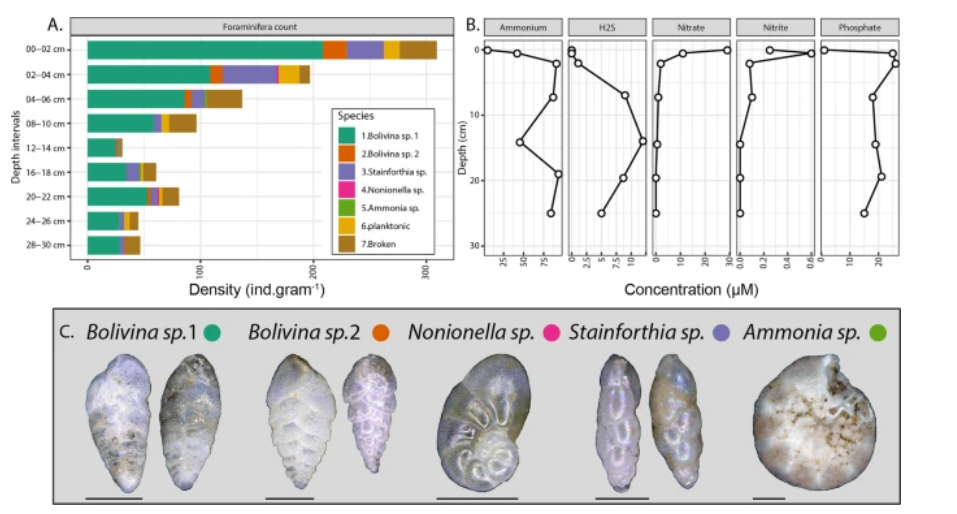A research article recently published in the ISME journal presents new findings on the cellular adaptations of Foraminifera to anoxic environment. The paper called "Anaerobic metabolism of Foraminifera thriving below the seafloor" presents proof that the single-celled eukaryotes’ metabolic functions are stimulated in anoxic environments.

Figure. Census count of foraminifera tests and corresponding geochemical profiles in anoxic Namibian sediment. Source:
Authors of the article, amongst whom the IGNITE coordinators Dr. Michael Eitel and Prof. Gert Wörheide, performed a study on Foraminifera samples from the oxic-anoxic transition zone in marine sediments from the Namibian shelf. Using various research methods, including a 10-day incubation experiment, researchers prove that the development of anoxia coincides with a 20-40-fold increase in the relative abundance of Foraminifera protein encoding transcripts. Gene expression data indicate that Foraminifera use the phosphogen creatine phosphate as an ATP store, allowing reserves of high-energy phosphate to be maintained for demands of increased energy during anaerobic metabolism.
The findings of the study are important as Foraminifera are a major component of the benthic community. They are deemed one of the important environmental and paleoenvironmental indicators, and their development and status are relevant to a number of disciplines, including paleontology, paleoenvironmental studies, and geostratigraphy.
Read the article here.